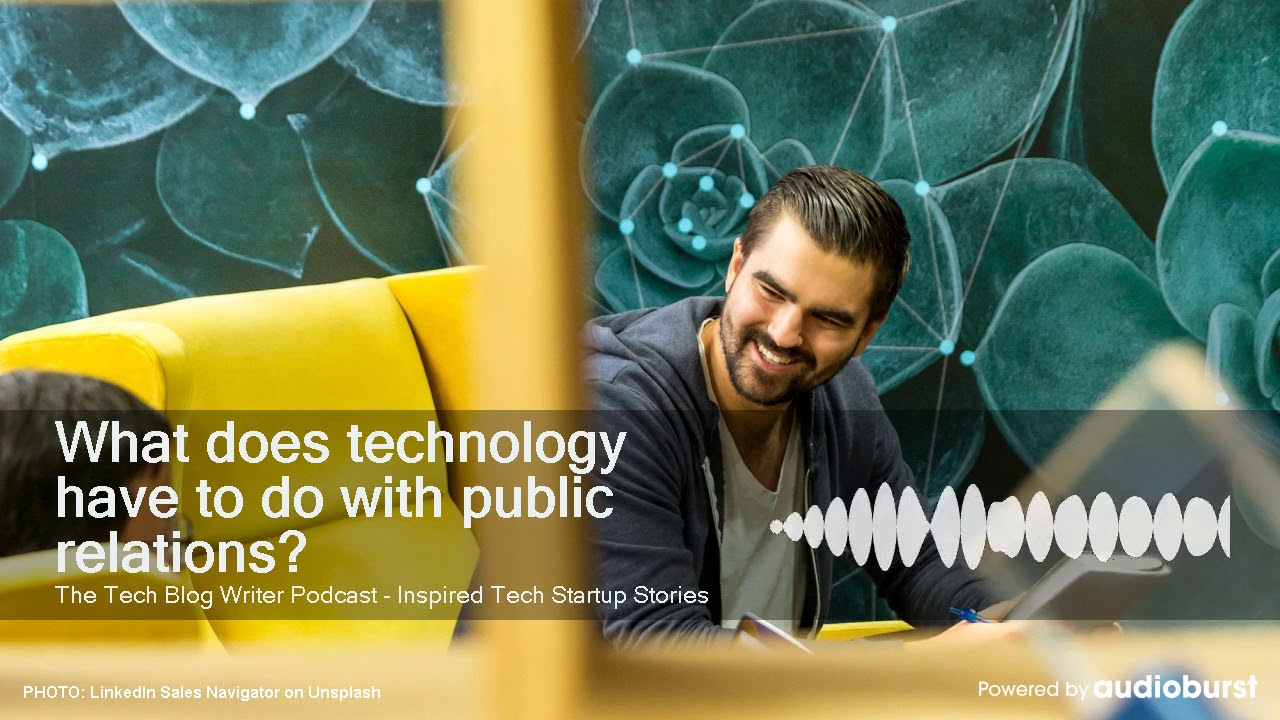As firms modify their approaches to public relations, technology continues to play a crucial part in the evolving public relations sector.
Public relations methods are no longer the same as they were 20 years ago, since everything has moved within the Digital Marketing arena, and a company's reputation is frequently based on what happens online.
Let's take a look at some of the changes that technology has brought to the world of public relations.

What does technology have to do with public relations?
The Positive And Negative Impacts Of Technological Public Relations
Ease Of PR Communication
For many firms, the Internet is their initial point of contact. Public relations professionals can rapidly inform the public and consumers on corporate news and product innovation.
Websites also enable interactive connections between public relations personnel and customers. Email facilitates communication with members of the media and the distribution of bulk press releases conveying key corporate news.
More Demanding Consumers
The Internet has generated more demanding customers and enabled disgruntled customers to broadcast their displeasure to a huge number of people. Consumers that are technologically aware utilize the Internet to study and educate themselves about things before purchasing them.
Inadequate or erroneous information frequently leads to customer unhappiness. Many customers also anticipate individualized experiences from customer serviceand product customization.
The Media Mix Is Complicated
Prior to the widespread usage of the Internet, public relations professionals employed a simpler media mix to promote businesses and goods. Magazines, newspapers, billboards, television, and radio were all part of the old media mix. New media mixes incorporate traditional media components as well as email, websites, blogs, viral videos, and webcasts.
To maintain a favorable public image, public relations specialists must maintain control over each of these new factors. Members of the public and competitive businesses may also develop and manipulate various new media aspects, and public relations experts must continually monitor the web for unwanted online exposure.
The Benefit Of A Website
A well-maintained and appealing corporate website might help to mitigate any bad internet exposure from dissatisfied customers or former workers. Public relations personnel may utilize the corporate website to connect with the general public, consumers, and members of other media outlets.
Websites may be used to present a company or product, giving both information and product personalization, which many modern consumers have grown to demand. Most parts of the new media mix may be managed by PR professionals by including them in the web pages of a company's website.
How Technology Is Changing Public Relations
Social Media Monitoring
Monitoring the media has long been one of the most important components of public relations, but how it is done has evolved dramatically as a result of technological advancements.
Before, media monitoring entailed reviewing the local and national press, mostly through newspapers, television news, and radio programs.
There is a lot more data to monitor on the Internet these days, which is why so many organizations rely on data science for marketing and public relations.
Media monitoring now incorporates and is mostly focused on social mediaimpressions. While the press is certainly important, obtaining a deeper knowledge of what people are saying about a firm through social media is even more important.
Taking Advantage Of Influencers
This technique might have seemed absurd years ago, but in today's social media world, ordinary individuals turned influencershave such huge power over customers that they cannot be ignored and must be exploited by public relations specialists to target the audience of many organizations.
Public relations firms have access to a new level of consumer involvement and brand reputationby collaborating with influencers. Influencers are critical in enhancing a company's reputation.
The Value Of Online Reputation
From the perspective of customers, a firm that does not have an internet presence simply does not exist. However, just presence is insufficient.
It has become critical for public relations firms to maintain a superb online image, which is why organizations are spending more and more of their resources on Digital Marketing.
Monitoring Performance Outcomes
Unlike in the past, when only newspapers were used to measure campaign effectiveness, public relations firms may now track the performance of campaigns.
Search Engine Optimization, a core part of Digital Marketing, has emerged as a critical tool for public relations, alongside website traffic counters and social media platforms such as TweetDeck.
Investing In Research
When we started utilizing Big Data in public relations research, everything changed. Prior to Big Data, individuals gathered information from large lists of marketing companies or through newspaper press releases.
Today, absolutely everything is at our fingertips. Google is a fantastic resource for public relations firms to find nearly any sort of information. Agencies or journalists can also be recruited to acquire specialized information that would not be easily accessed from a Google search.
The Power Of Visuals
Public relations organizations must no longer rely just on images and television shows.
Streaming has transformed the way brands present themselves to the public. Experts predict that future breakthroughs in this field will include holograms, augmented reality, and virtual reality.
Streaming has also become the main source of crisis managementin public relations.
Immediate Crisis Management
While all of these technologies have made it simpler for public relations firms to engage with customers and follow trends, they have also resulted in a shorter window for responding to a crisis.
Companies used to be able to create a crisis response in hours or days. Because people now have unprecedented access to information, everything must be responded to instantly.
Social media managementtoday plays a significant part in crisis management and, when handled effectively, has the potential to assist relieve difficulties.
Conclusion
The public relations sector has been permanently altered by technological advancements. However, this is the way communication changes, and in order to have successful public relations strategies, businesses must keep on top of the trends.
As public relations practitioners, we must embrace the future of public relations by embracing the future of these technologies.
What Is The Role Of Technology In Public Relations?
For many firms, the Internet is their initial point of contact. Websites also enable interactive connections between public relations personnel and customers. Email facilitates communication with members of the media and the distribution of bulk press releases conveying key corporate news.
How Technology Is Changing The Media Industry?
Consumers of material are increasingly searching for quick and easy methods to consume information, which has increased the demand for video-based delivery. When this is combined with the quick advancement of HD, 4K, 8K, and VR, there is now a big chance for really immersive entertainment.

